In 1888, Vincent moved to Arles in the south of France. He planned to establish an artists’ commune where his friends could live together to create a new direction in painting. Vincent persuaded the artist Paul Gauguin, who was desperate for money, to move to Arles to help him. Vincent also was lonely. For two months Gauguin lived in the Yellow House Vincent had lovingly filled with paintings hoping to impress his friend. Gauguin bossed Vincent around and criticized his artwork. Eventually, when Gauguin sold a few paintings, he threatened to abandon Vincent. Finally, on Christmas Eve, after a quarrel at dinner, Gauguin stalked off into the streets. Vincent followed him. What happened next is unclear, but Vincent returned to the Yellow House alone and cut off his earlobe (not the whole ear) with a razor. Vincent couldn’t remember the details of this terrible night. But when he was discharged from the hospital a few weeks later, he went right back to work. There have been many theories about Vincent’s condition. The theory most generally accepted is that he suffered from epilepsy, a disease that could have caused his seizures and hallucinations and for which there was no medication. In Vincent’s case, another reason for his “attacks” might have been his habit of drinking absinthe, an alcoholic drink popular in 19th century France. It contains a strong nerve poison, now illegal in most countries. Today many popular performers advertise how dangerous and extreme their lives are by writing shocking lyrics and acted outrageously on stage. They are mimicking the lives of artists such as Van Gogh. But he was not advertising or pretending. He just wanted to be useful—to make art that would last. His glorious paintings are the result of his discipline and dedication, despite the turmoil of his life. 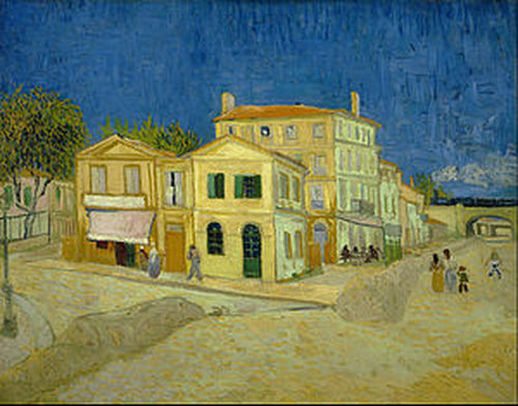 Vincent Van Gogh, The Yellow House, 1888, oil on canvas, Van Gogh Museum, Amsterdam. This is the house at 2 Place Lamartine, Arles, France, where, on May 1, 1888, Vincent van Gogh rented four rooms and where Paul Gauguin lived for nine weeks from late October, 1888. The left wing housed a grocery (French: Comestibles, inscribed on the signboard over the marque). Van Gogh indicated that the restaurant, where he used to have his meals, was in the building painted pink close to the left edge of the painting. 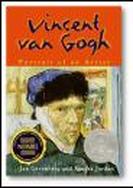 If you are interested in finding out more about Vincent Van Gogh, Jan Greenberg and Sandra Jordan have written an award-winning book on the subject. Click here for more information. MLA 8 Citation Greenberg, Jan. "Vincent Van Gogh and the Case of the Missing Ear." Nonfiction Minute, iNK Think Tank, 20 Oct. 2017, www.nonfictionminute.org/the-nonfiction-minute/vincent-van-gogh-and-the-case-of-the-missing-ear.
0 Comments
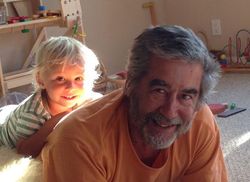 Chances are you are eagerly looking forward to the last day of school and nearly three months of free time. Chances are also that you heard that this nice long summer vacation is somehow connected to the early years of the country when agriculture was the most important industry and kids had to help out on their farms during this time. If so, you heard wrong. For starters, there wasn’t much to do on farms in the summer. The busy times were spring (planting) and fall (harvesting). As a result, most farm kids went to school during the summer and winter. At best they spent a total of six months learning the three Rs. It was a very different situation in cities as the country became increasingly urbanized. Big-city kids might spend as much as 48 weeks in class, with a week off every 12 weeks. Since attendance wasn’t mandatory, though, they probably only attended school about as much as they do now. But if so many kids were playing hooky, reformers said, why bother keeping schools open all year? Some doctors backed up the idea of closing for a period of time, saying that keeping kids cooped up for most of the year wasn’t good for their health. So education officials decided to eliminate the summer quarter. The first reason was that schools were not air conditioned back then and almost unbearable during heat waves. Also, there was also a strong belief that summer was the time when epidemics of serious diseases such as polio got started. Many people thought having so many children packed so close to each other in classrooms helped spread the illnesses. Third, upper-class and middle-class families often took vacations during the hot months. With increasing mechanization on farms and many farm families moving to the cities, helping with planting and harvesting wasn’t as important. Farm states added those spring and fall months to the school year and gave kids the summers off, just like big-city folk. However, some research suggests that the “summer slide” causes students to lose an average of a month of learning. Students typically don’t do as well on tests in the fall—after the long summer break—than in the spring when they’ve been in school for several months. Most other developed countries spend more time in the classroom and generally do better on standardized testing. As a result of these factors, a few states are considering lengthening the school year from the current 180 days to 200. What do you think? Jim Whiting hopes all of you have a wonderful summer and that you can carve out some time to read! Your local library may have some of his books, as well as many by the other wonderful authors who have made the Nonfiction Minute such a great success. And be sure to check out Jim's updated website, www.jimwhiting.com MLA 8 Citation Whiting, Jim. "Why Do We Have a School Summer Vacation?" Nonfiction Minute, iNK Think Tank, 15 June 2018, www.nonfictionminute.org/the-nonfiction-minute/ Why-Do-We-Have-a-School-Summer-Vacation? All of the iNK authors will be working over the summer to create new Minutes for next year. We will be posting three lists of 10 Minutes for the Summer. It will highlight each of our wonderful authors. The first Summer Minutes will be published on June 23rd, tghe next on July 20 and the final list before the school year starts on August 10th. Make it a wonderful summer and every Minute!
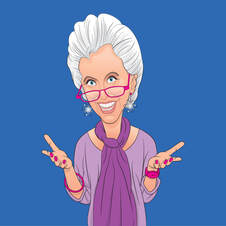 How does a virus cause a disease? A virus is not a complete living thing. It is like a free-floating nucleus of cell. It doesn’t “grow” but under certain conditions it can make a copy of itself or reproduce. It invades the cells of other living things to use the internal structure of the host cells to reproduce. At a certain point, the number of new viruses in a cell is so large that the cell ruptures and dies, spilling out newly made viruses to continue the invasion to other uninfected cells. One virus we understand very well is chicken pox. Chicken pox is a very contagious disease that enters the body through the air and affects mostly children. When I was young almost every kid got chicken pox but, since 1995, there has been a vaccine, which makes you immune and protects the spread of the disease to others. Is there another way to explain how this virus works? Suppose I imagine a virus could think, which it can’t. But, imagination gives me the freedom to think differently. So I wrote a poem about an army of chicken pox viruses as they are about to attack a human being, maybe you, my reader. A “battle hymm” is a chant or a song to rally the troups just before an attack. The Battle Hymn of the Chicken Pox Troopers 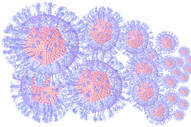 Charge forward, fellow viruses! Invade a cell or two Then let us join together And make a chicken pox on you.  Let cells try to fight us No matter what they do Red spots of our graffiti Make a chicken pox on you  We make the top skin separate And fill the space with goo, Small, itchy blisters are a stage Of chicken pox on you. 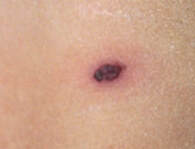 And when the blisters break, my friend You think perhaps we’re through But no. Now there is a scab For each chicken pox on you  Scratch a scab so it comes off Baring skin that’s raw and new, A scar forever marks the spot Of that chicken pox on you. 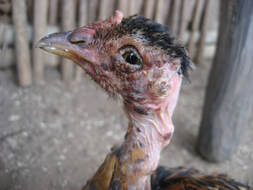 The source? Chicken with fowl pox The source? Chicken with fowl pox To the battle, fellow viruses! We’re more noteworthy than flu They just make you feel sick We make our chicken pox on you! 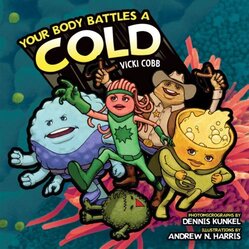 Meet your personal superheroes - your body's cells Superhero cells rally together to battle common childhood ailments in this series in which Vicki Cobb explains how your amazing human body heals itself and fights off intruders. Here's her book on yet another virus: Your Body Battles a Cold. 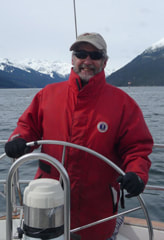  During the Middle Ages, “going to the bathroom” or “relieving oneself” meant using a privy. A privy typically consisted of a raised board with one or more openings cut in the middle where the users would sit. Their fecal matter would plop into large holes called cesspits beneath them. Over time, the cesspits would fill up and start overflowing. When that happened, gong farmers had to empty them. “Gong” came from a word that means “going.” And the farmers “harvested” the accumulation of months or even years of “going.” To make sure all the foul material was removed, the workers would hop down into the pits, where the feces came up their waists or even higher. Because of the relative ease of getting them in and out, small boys were often employed. The cesspool contents were dumped into carts and taken to larger dump sites on the edge of town, where more conventional farmers would use it as fertilizer. People in the Middle Ages rarely bathed. So gong farmers stunk. Really. Stunk. Because of their horrible stench, they were often restricted in where they could live. They were allowed to work only at night to spare their fellow citizens from seeing and smelling them. Besides the horrible smell and probable lack of friends, gong farmers encountered specific occupational hazards. Decaying fecal matter could produce poisonous gases. At least one gong farmer stumbled into a cesspool he was cleaning and drowned. Violators of the rules for collecting the refuse and disposing of it were submerged in barrels up to their necks and placed on public display for hours on end. On the other hand, gong farmers were well paid, often earning in a day what other workers might make in a week. They had another potential source of income as well. Careless crappers occasionally dropped rings or coins into the cesspits. Enterprising gong farmers combed through the mess with their bare hands in search of those treasures. The advent of better sanitary methods in the 19th century ended gong farmers in many countries. However, it is still practiced in some areas of the world. You can learn more about Jim Whiting with a visit to his website. He is an interesting fellow with an interest in music and sports and has written lots of books in both fields. MLA 8 Citation
Whiting, Jim. "Gong Farmers: Their Crop Was ...Crap." Nonfiction Minute, iNK Think Tank, 15 Dec. 2017, www.nonfictionminute.org/Gong-Farmers.
In spring 1665 a college student named Isaac Newton studied natural philosophy, what we call “science.” Back then, a good student could learn everything to know about the natural world. But plague, the Black Death, came to England. Cambridge University closed. Isaac went home to Woolsthorpe. For two years Isaac thought about his studies during four years at university. He’d always been thoughtful—not the best at games, making friends, or minding sheep. But everybody knew Isaac Newton liked to think. Folks told time by the sundial he’d drawn on a wall. Home at Woolsthorpe, Isaac’s learning about science and math bubbled up in his head like yeast rising in a loaf of bread. So... Newton unplugged. His mind roamed like that of an artist or composer. He was driven by the need to create—not paintings or symphonies, but questions. “Why do things always fall down?” “Why does the earth move around the sun? “Why doesn’t the moon fall onto the earth?” “Does everything ‘up there” work like things work ‘down here?’” Isaac Newton answered his questions with three science rules, Newton’s Laws of Motion. At Woolsthorpe, Newton grappled with the concept of moving objects. He worked out the math to find the area under curves. He called this math fluxions. Today we call this calculus, useful for launching rockets or tracking TV signals. Once back at Cambridge, Newton said nothing until he read someone else’s paper on fluxions. Newton published a better paper. Soon he was Cambridge’s top math professor. Isaac Newton wondered another twenty years. He played with prisms in a dark room and theorized that white light comprises the visible spectrum of red, orange, yellow, green, blue, indigo, and violet. He practiced alchemy and chemistry, looking for the legendary philosopher’s stone to turn base metals to gold. In 1687, Newton published our most important science book, the Principia. In the Principia, Newton showed how laws of gravity and motion work the same at great distances—far off in space, or in your classroom. We accept these ideas, but in 1687 many still had medieval beliefs that sun, moon, planets, and stars all traveled in their own crystal spheres. Yes, Newton wondered about A LOT:
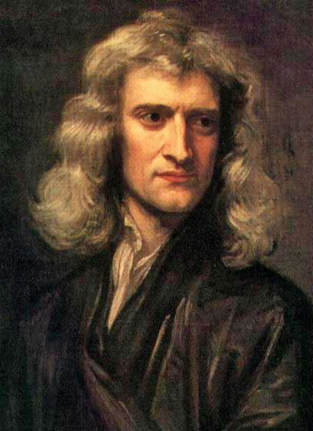 Sir Isaac Newton was an English mathematician, astronomer, theologian, author and physicist who is widely recognized as one of the most influential scientists of all time and a key figure in the scientific revolution. Based on a portrait by Godfrey Kneller, 1702, via Wikimedia Commons Sir Isaac Newton's own first edition copy of his Philosophiae Naturalis Principia Mathematica with his handwritten corrections for the twentieth edition. Photograph Andrew Dunn via Wikimedia Commons Trinity College, the part of the University of Cambridge where Newton worked and lived. Library of Congress This statue of the young Isaac Newton stands at the Oxford University Museum of Natural History. Look carefully around his feet for a hint on what he is wondering about. If you can’t figure it out, then read about Newton and gravity. Wikimedia Commons 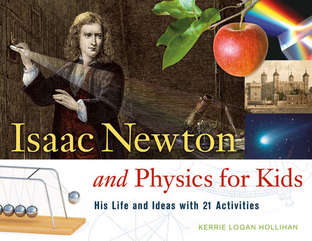 Featuring 21 hands-on projects that explore the scientific concepts Isaac Newton developed, Kerrie Logan Hollihan's Isaac Newton and Physics for Kids paints a rich portrait of the brilliant and complex man and provides readers with a hands-on understanding of astronomy, physics, and mathematics. A time line, excerpts from Newton's own writings, online resources, and a reading list enhance this unique activity book. MLA 8 Citation
Hollihan, Kerrie Logan. "Isaac Newton's Wonder Years." Nonfiction Minute, iNK Think Tank, 21 Feb. 2018, www.nonfictionminute.org/the-nonfiction-minute/ isaac-newtons-wonder years. |
*NEWS
|
For Vicki Cobb's BLOG (nonfiction book reviews, info on education, more), click here: Vicki's Blog
The NCSS-CBC Notable Social Studies Committee is pleased to inform you
that 30 People Who Changed the World has been selected for Notable Social Studies Trade Books for Young People 2018, a cooperative project of the National Council for the Social Studies (NCSS) & the Children’s Book Council
Categories
All
Abolitionists
Adams Janus
Adaptation
Adaptations
Adkins Jan
Advertising
Aerodynamics
Africa
African American History
African Americans
Africa West
Agriculture
Aircraft
Air Pilots
Air Pressure
Air Travel
Albee Sarah
Alchemy
Alligators
Allusion
American History
American Icons
Amphibians
Amundsen Roald
Anatomy
Ancient
Ancient Cultures
Anderson Marian 1897-1993
Animal Behavior
Animal Experimentation
Animal Intelligence
Animals
Animation
Antarctica
Ants
Apache Indians
Apes
April Fool's Day
Architecture
Argument
Arithmetic
Art
Art Deco
Artists
Arts
Asia
Astronauts
Astronomy
Athletes
Atomic Theory
Audubon Societies
Authors
Autobiography
Automobiles
Aviation
Awards
Bacteria
Baseball
Battuta Ibn
Bears
Beatles
Beavers
Bees
Biodegradation
Biography
Biology
Biomes
Biomimicry
Biplanes
Birds
Black Death
Black History
Blindness
Blizzards
Bombs
Bonaparte Napoleon
Boone Daniel
Botany
Brazil
Bridges
Brill Marlene Targ
Brooklyn Bridge
Brown John
Buffaloes
Building Materials
Butterflies
Caesar
Caesar Julius
Caissons
Calculus
Calendars
Cannibal
Capitals
Caravaggio
Carbon Dioxide
Carnivores
Carson Mary Kay
Cartoons & Comics
Carving (Decorative Arts)
Cascade Range
Castaldo Nancy
Castles
Castrovilla Selene
Cathedrals
Cats
Caves
Celts
Cemeteries
Chemistry
Children's Authors
Child Welfare
China
Choctaw Indians
Christmas
Chronometers
Cicadas
Cinco De Mayo
Ciphers
Circle
Citizenship
Civil Rights
Civil Rights Movements
Civil War
Civil War - US
Climate
Climate Change
Clocks And Watches
Clouds
Cobb Vicki
COBOL (Computer Language)
Code And Cipher Stories
Collard III Sneed B.
Collectors And Collecting
Color
Commerce
Communication
Competition
Compilers
Composers
Computers
Congressional Gold Medal
Consitution
Contests
Contraltos
Coolidge Calvin
Cooling
Corms
Corn
Counterfeiters
Covid-19
Crocodiles
Cryptography
Culture
Darwin Charles
Declaration Of Independence
Decomposition
Decompression Sickness
Deep-sea Animals
Deer
De Medici Catherine
Design
Detectives
Dickens Charles
Disasters
Discrimination
Diseases
Disney Walt
DNA
Dogs
Dollar
Dolphins
Douglass Frederick 1818-1895
Droughts
Dr. Suess
Dunphy Madeleine
Ear
Earth
Earthquakes
Ecology
Economics
Ecosystem
Edison Thomas A
Education
Egypt
Eiffel-gustave-18321923
Eiffel-tower
Einstein-albert
Elephants
Elk
Emancipationproclamation
Endangered Species
Endangered-species
Energy
Engineering
England
Englishlanguage-arts
Entomology
Environmental-protection
Environmental-science
Equinox
Erie-canal
Etymology
Europe
European-history
Evolution
Experiments
Explorers
Explosions
Exports
Extinction
Extinction-biology
Eye
Fairs
Fawkes-guy
Federalgovernment
Film
Fires
Fishes
Flight
Floods
Flowers
Flute
Food
Food-chains
Foodpreservation
Foodsupply
Food-supply
Football
Forceandenergy
Force-and-energy
Forensicscienceandmedicine
Forensic Science And Medicine
Fossils
Foundlings
France
Francoprussian-war
Freedom
Freedomofspeech
French-revolution
Friction
Frogs
Frontier
Frontier-and-pioneer-life
Frozenfoods
Fugitiveslaves
Fultonrobert
Galapagos-islands
Galleys
Gametheory
Gaudi-antoni-18521926
Gender
Generals
Genes
Genetics
Geography
Geology
Geometry
Geysers
Ghosts
Giraffe
Glaciers
Glaucoma
Gliders-aeronautics
Global-warming
Gods-goddesses
Gold-mines-and-mining
Government
Grant-ulysses-s
Grasshoppers
Gravity
Great-britain
Great-depression
Greece
Greek-letters
Greenberg Jan
Hair
Halloween
Handel-george-frederic
Harness Cheryl
Harrison-john-16931776
Health-wellness
Hearing
Hearing-aids
Hearst-william-randolph
Henry-iv-king-of-england
Herbivores
Hip Hop
History
History-19th-century
History-france
History-world
Hitler-adolph
Hoaxes
Holidays
Hollihan Kerrie Logan
Homestead-law
Hopper-grace
Horses
Hot Air Balloons
Hot-air-balloons
Housing
Huguenots
Human Body
Hurricanes
Ice
Icebergs
Illustration
Imagery
Imhotep
Imperialism
Indian-code-talkers
Indonesia
Industrialization
Industrial-revolution
Inquisition
Insects
Insulation
Intelligence
Interstatecommerce
Interviewing
Inventions
Inventors
Irrational-numbers
Irrigation
Islands
Jacksonandrew
Jazz
Jeffersonthomas
Jefferson-thomas
Jemisonmae
Jenkins-steve
Jet-stream
Johnsonlyndonb
Jokes
Journalism
Keeling-charles-d
Kennedyjohnf
Kenya
Kidnapping
Kingmartinlutherjr19291968
Kingmartinlutherjr19291968d6528702d6
Kings-and-rulers
Kings Queens
Kings-queens
Koala
Labor
Labor Policy
Lafayette Marie Joseph Paul Yves Roch Gilbert Du Motier Marquis De 17571834
Landscapes
Languages-and-culture
Law-enforcement
Layfayette
Levers
Levinson Cynthia
Lewis And Clark Expedition (1804-1806)
Lewis Edmonia
Liberty
Lift (Aerodynamics)
Light
Lindbergh Charles
Liszt Franz
Literary Devices
Literature
Lizards
Longitude
Louis XIV King Of France
Lumber
Lunar Calendar
Lynching
Macaws
Madison-dolley
Madison-james
Madison-james
Mammals
Maneta-norman
Maneta-norman
Marathon-greece
Marine-biology
Marine-biology
Marines
Marsupials
Martial-arts
Marx-trish
Mass
Massachusetts-maritime-academy
Mass-media
Mastodons
Mathematics
May-day
Mcclafferty-carla-killough
Mcclafferty-carla-killough
Mckinley-william
Measurement
Mechanics
Media-literacy
Media-literacy
Medicine
Memoir
Memorial-day
Metaphor
Meteorology
Mexico
Mickey-mouse
Microscopy
Middle-west
Migration
Military
Miners
Mississippi
Molasses
Monarchy
Monsters
Montgomery
Montgomery-bus-boycott-19551956
Montgomery-heather-l
Monuments
Moon
Moran-thomas
Morsecode
Morsesamuel
Moss-marissa
Moss-marissa
Motion
Motion-pictures
Mummies
Munro-roxie
Munro-roxie
Musclestrength
Museums
Music
Muslims
Mythologygreek
Nanofibers
Nanotechnology
Nathan-amy
Nathan-amy
Nationalfootballleague
Nationalparksandreserves
Nativeamericans
Native-americans
Native-americans
Naturalhistory
Naturalists
Nature
Nauticalcharts
Nauticalinstruments
Navajoindians
Navigation
Navy
Ncaafootball
Nervoussystem
Newdeal19331939
Newman-aline
Newman-aline
Newton-isaac
New-york-city
Nobelprizewinners
Nomads
Nonfictionnarrative
Nutrition
Nylon
Nymphs-insects
Oaths Of Office
Occupations
Ocean
Ocean-liners
Olympics
Omnivores
Optics
Origami
Origin
Orphans
Ottomanempire
Painters
Painting
Paleontology
Pandemic
Paper-airplanes
Parksrosa19132005
Parrots
Passiveresistance
Patent Dorothy Hinshaw
Peerreview
Penguins
Persistence
Personalnarrative
Personification
Pets
Photography
Physics
Pi
Pigeons
Pilots
Pinkertonallan
Pirates
Plague
Plains
Plainsindians
Planets
Plantbreeding
Plants
Plastics
Poaching
Poetry
Poisons
Poland
Police
Political-parties
Pollen
Pollution
Polo-marco
Populism
Portraits
Predation
Predators
Presidentialmedaloffreedom
Presidents
Prey
Prey-predators
Prey-predators
Prime-meridian
Pringle Laurence
Prohibition
Proteins
Protestandsocialmovements
Protestants
Protestsongs
Punishment
Pyramids
Questioning
Radio
Railroad
Rainforests
Rappaport-doreen
Ratio
Reading
Realism
Recipes
Recycling
Refrigerators
Reich-susanna
Religion
Renaissance
Reproduction
Reptiles
Reservoirs
Rheumatoidarthritis
Rhythm-and-blues-music
Rice
Rivers
Roaringtwenties
Roosevelteleanor
Rooseveltfranklind
Roosevelt-franklin-d
Roosevelt-theodore
Running
Russia
Safety
Sanitation
Schwartz David M
Science
Scientificmethod
Scientists
Scottrobert
Sculpture
Sculpturegardens
Sea-level
Seals
Seals-animals
Secretariesofstate
Secretservice
Seeds
Segregation
Segregationineducation
Sensessensation
September11terroristattacks2001
Seuss
Sextant
Shackletonernest
Shawneeindians
Ships
Shortstories
Silkworms
Simple-machines
Singers
Siy Alexandra
Slavery
Smuggling
Snakes
Socialchange
Social-change
Socialjustice
Social-justice
Socialstudies
Social-studies
Social-studies
Sodhouses
Solarsystem
Sound
Southeast-asia
Soybean
Space Travelers
Spain
Speech
Speed
Spiders
Spies
Spiritualssongs
Sports
Sports-history
Sports-science
Spring
Squirrels
Statue-of-liberty
STEM
Storms
Strategy
Sugar
Sumatra
Summer
Superbowl
Surgery
Survival
Swanson-jennifer
Swinburne Stephen R.
Synthetic-drugs
Taiwan
Tardigrada
Tasmania
Tasmanian Devil
Tasmanian-devil
Technology
Tecumsehshawneechief
Telegraph-wireless
Temperature
Tennis
Terrorism
Thomas Peggy
Thompson Laurie Ann
Time
Titanic
Tombs
Tortoises
Towle Sarah
Transcontinental-flights
Transportation
Travel
Trees
Trung Sisters Rebellion
Tundra
Turnips
Turtles
Typhoons
Underground Railroad
Us-environmental-protection-agency
Us History
Us-history
Ushistoryrevolution
Us History Revolution
Us-history-war-of-1812
Us Presidents
Ussupremecourtlandmarkcases
Vacations
Vaccines
Vangoghvincent
Vegetables
Venom
Vietnam
Viruses
Visual-literacy
Volcanoes
Voting-rghts
War
Warne-kate
Warren Andrea
Washington-dc
Washington George
Water
Water-currents
Wax-figures
Weapons
Weather
Weatherford Carole Boston
Whiting Jim
Wildfires
Winds
Windsor-castle
Wolves
Woman In History
Women
Women Airforce Service Pilots
Women-airforce-service-pilots
Womeninhistory
Women In History
Women-in-science
Women's History
Womens-roles-through-history
Wonder
Woodson-carter-godwin-18751950
World-war-i
World War Ii
World-war-ii
Wright Brothers
Writing
Writing-skills
Wwi
Xrays
Yellowstone-national-park
Zaunders Bo
ArchivesMarch 2021
February 2021
January 2021
December 2020
November 2020
October 2020
September 2020
June 2020
May 2020
April 2020
March 2020
February 2020
January 2020
December 2019
October 2019
September 2019
August 2019
July 2019
May 2019
April 2019
March 2019
February 2019
January 2019
December 2018
November 2018
September 2018
June 2018
May 2018
April 2018
March 2018
February 2018
January 2018
December 2017
November 2017
October 2017
September 2017
March 2017
The NONFICTION MINUTE, Authors on Call, and. the iNK Books & Media Store are divisions of iNK THINK TANK INC.
a 501 (c) (3) nonprofit corporation. To return to the iNK Think Tank landing page click the icon or the link below. :
http://inkthinktank.org/
For more information or support, contact thoughts@inkthinktank.org
For Privacy Policy, go to
Privacy Policy
© COPYRIGHT the Nonfiction Minute 2020.
ALL RIGHTS RESERVED.
This site uses cookies to personalize your experience, analyze site usage, and offer tailored promotions. www.youronlinechoices.eu
Remind me later
Archives
March 2023
February 2023
January 2023
December 2022
November 2022
October 2022
September 2022
June 2022
May 2022
April 2022
March 2022
February 2022
January 2022
December 2021
November 2021
September 2021
April 2021
March 2021
February 2021
November 2020
October 2020
September 2020
June 2020
May 2020
April 2020
March 2020
February 2020
January 2020
October 2019
August 2019
July 2019
May 2019
April 2019
December 2018
September 2018
June 2018
May 2018
March 2018
February 2018
January 2018
December 2017
November 2017
October 2017
September 2017



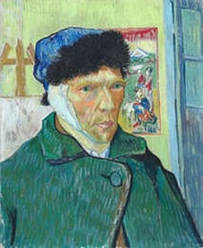


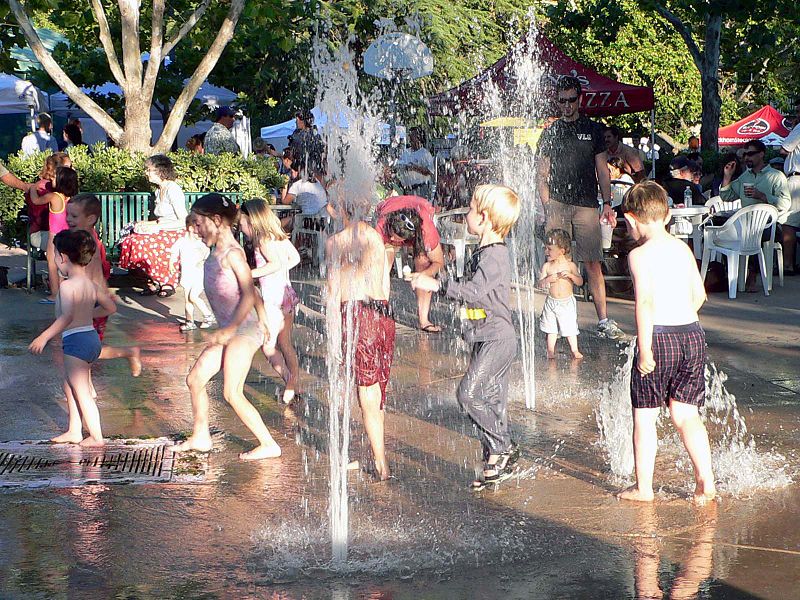




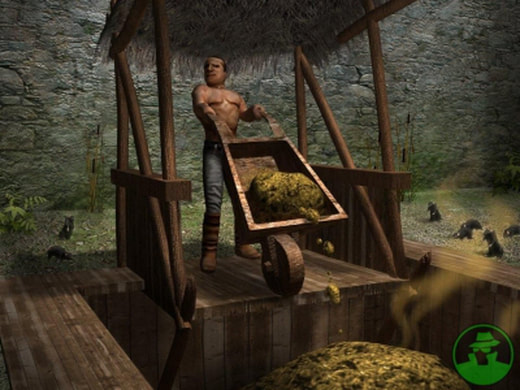
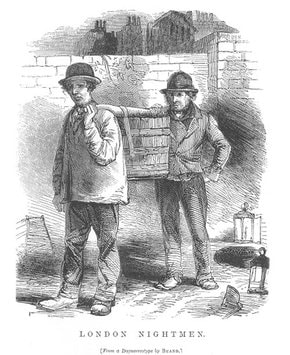
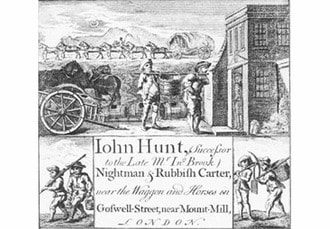

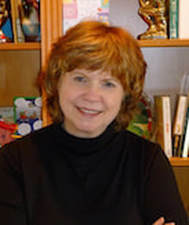

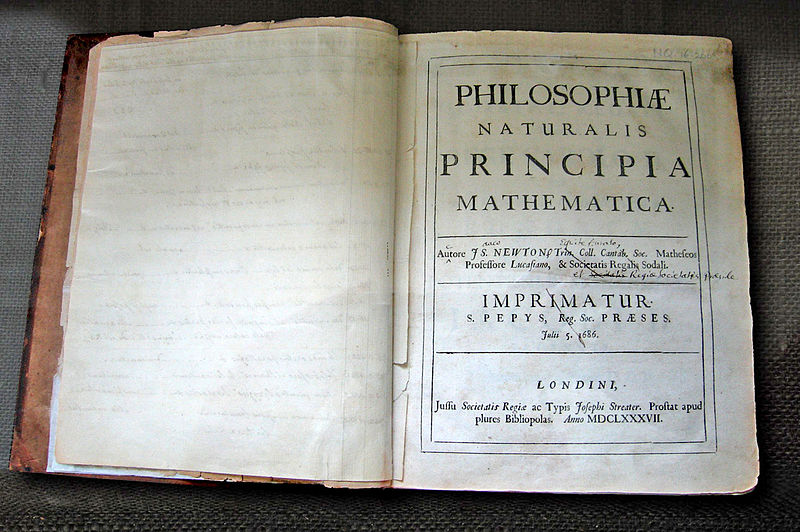
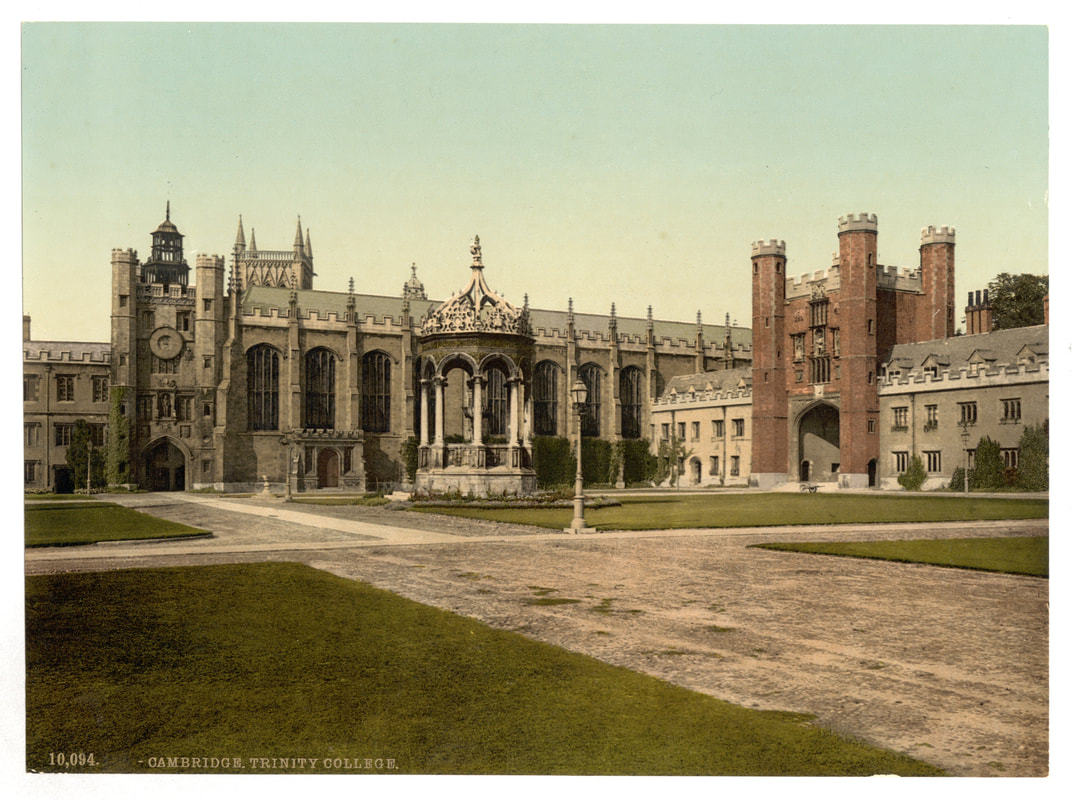
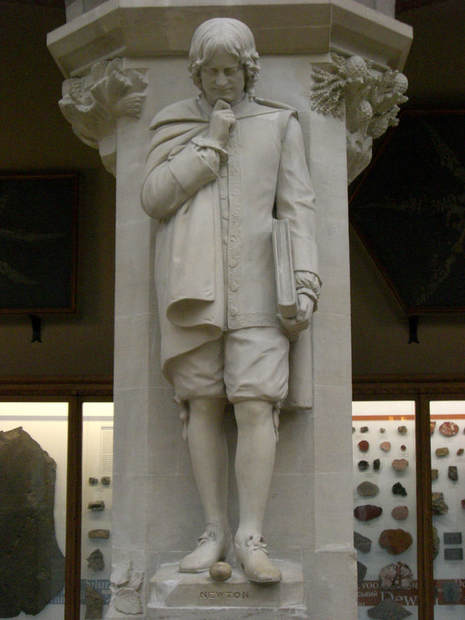

 RSS Feed
RSS Feed
